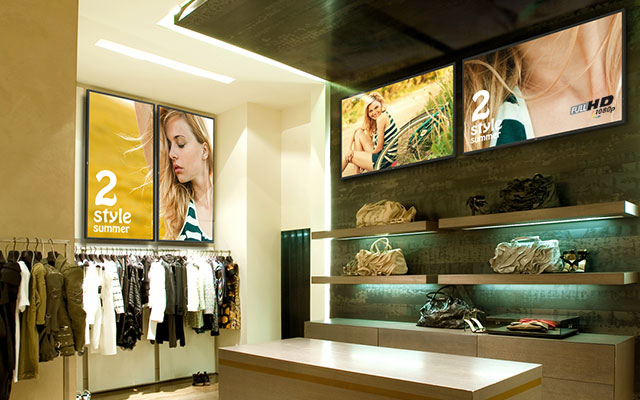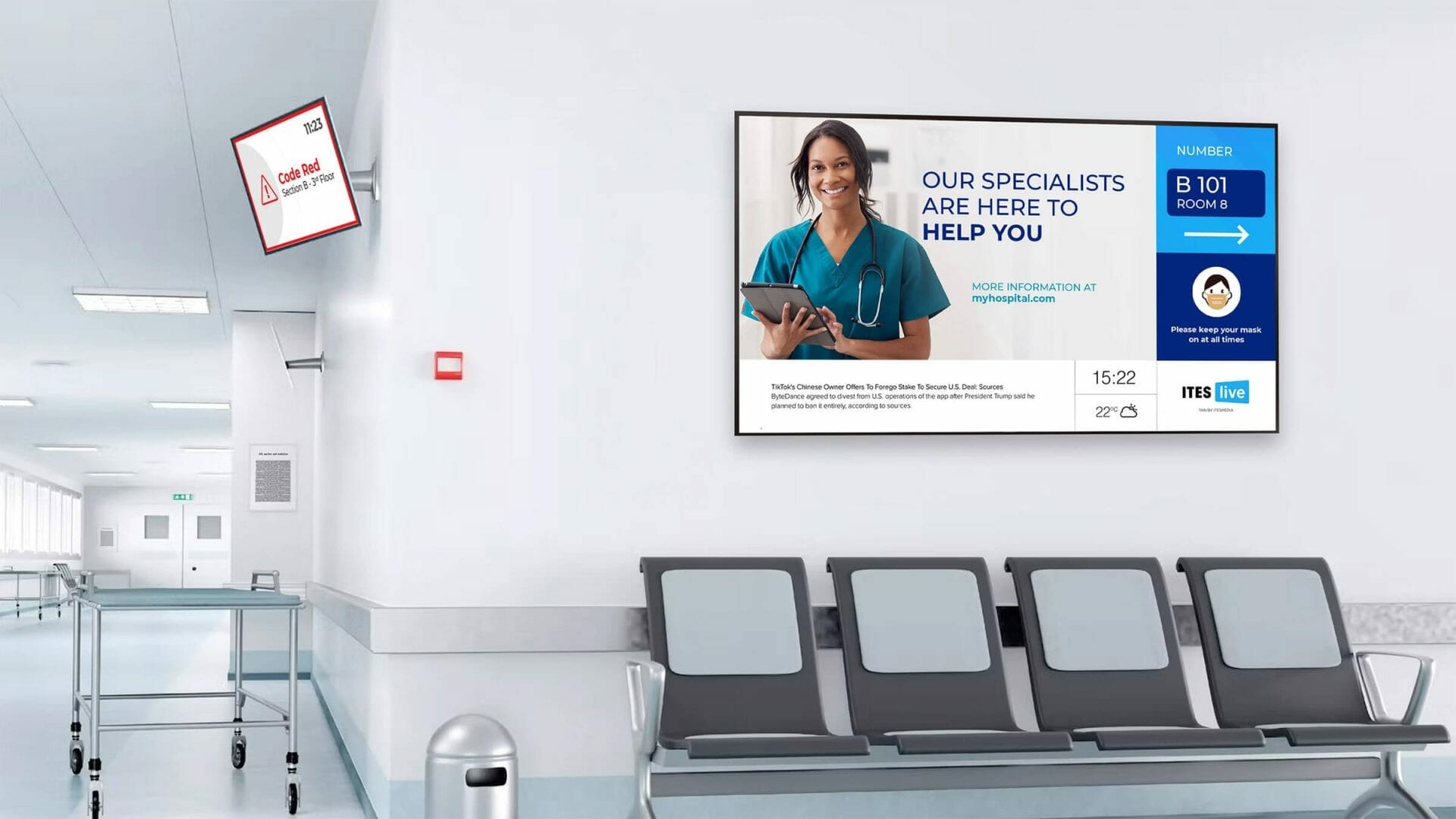Displays in commercial spaces
Various digital media are increasingly utilized in commerce for advertising purposes, including single screens and combinations such as video walls. These electronic solutions automate content updates—for instance, electronic shelf labels enable real-time price changes without manual intervention. Additionally, screens are commonly integrated into other shopping devices

LCD-TFT displays remain prevalent in commercial advertising due to their high brightness and vibrant color capabilities. In brightly lit commercial spaces like galleries, achieving optimal content readability requires selecting displays with appropriate brightness levels. For indoor environments, a brightness of at least 600 cd/m² is recommended, with higher brightness levels needed in well-lit areas.
Video walls, composed of interconnected LCD-TFT displays, offer impactful advertising solutions. To minimize bezel interruptions, frameless models with minimal matrix borders are ideal for creating seamless images.
Alternatively, e-paper displays provide energy-efficient advertising options with a paper-like appearance. These displays can produce a broad color palette, enhancing visual appeal. However, their limited refresh rates make them more suitable for static images rather than dynamic video content.
In commercial settings such as galleries, LCD-TFT displays are commonly used for advertising. To ensure optimal readability in brightly lit environments, it’s essential to select displays with appropriate optical parameters, including a brightness level of at least 750 cd/m². An effective advertising solution is the use of videowalls—arrays of interconnected LCD-TFT displays presenting a single image. For such applications, frameless models with minimal bezels are ideal.
Alternatively, e-paper displays, especially color EPD variants offer another option. These displays utilize simpler electronics to produce seven colors—black, white, red, yellow, blue, green, and orange—commonly used in advertising.








